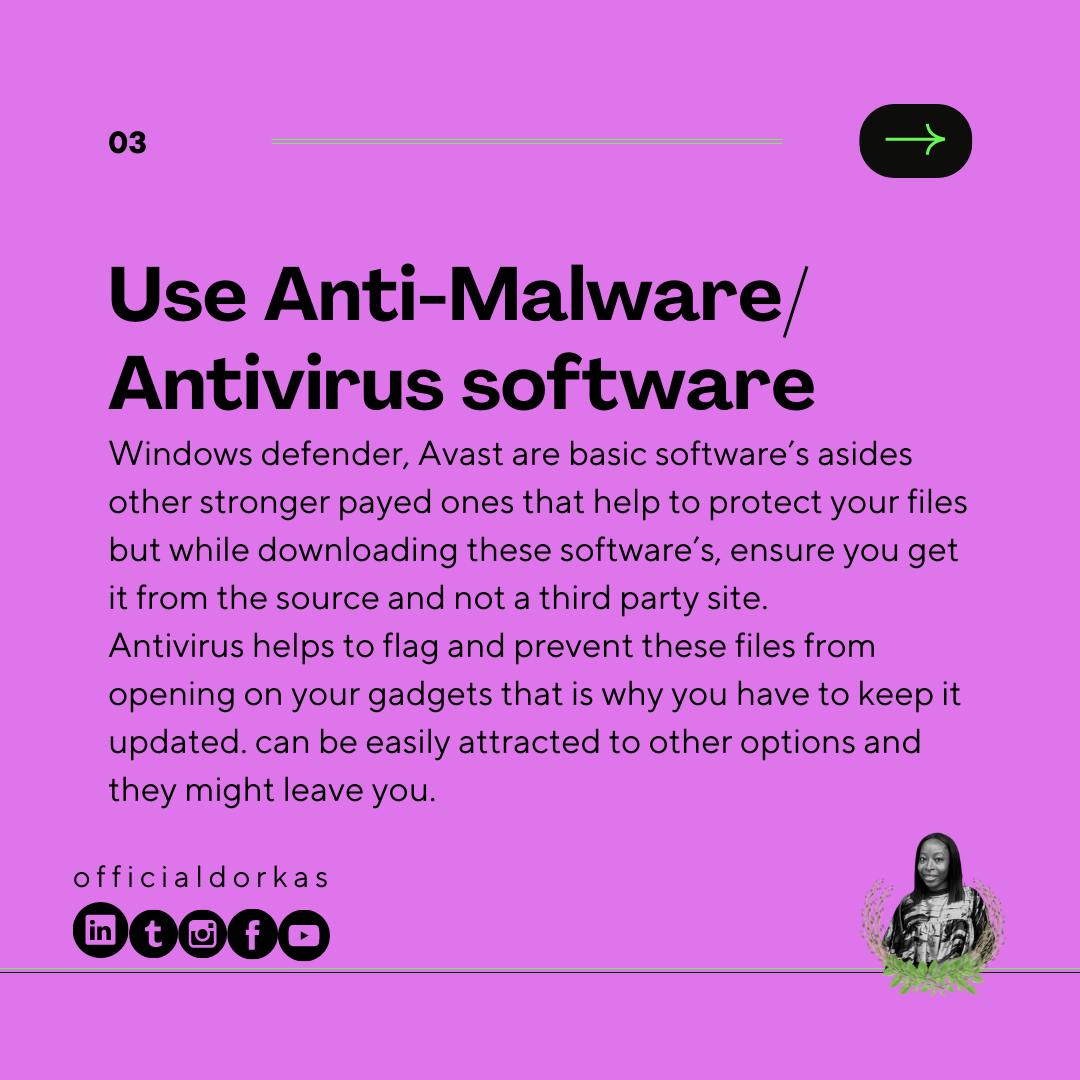In as much as you are a techie, a strong emphasis on comprehending less well known aspect of web as programing, web page interactions and secure connection can help you not to be vulnerable to internet attacks.
Are you a Newbie? You must have had these experiences of getting on pages and servers that hacked your files and you ended up losing everything. Well, there are internet safe practices that would help, this is called Internet Safety.
WHAT IS INTERNET SAFETY?
Internet safety is the activity of adhering to practical standards, comprehending technology to safeguard your digital gadgets from the malicious world.
There are easy ways you can identify an online scam, sender’s identity, cyberbullies, protect your privacy using Ad blockers, VPN (Virtual Personal Network), verify link is safe (HTTP and HTTPS) where the S stands for Secure- A secure socket layer.
Malware, short for -Malicious Software is designed to steal data, damage or destroy your computers and that’s why you need to study these practices. Have you ever tried downloading a song an at the end it ends up not playing or you lost the song file, well, two possible things might have happen, either you downloaded a malware like Virus, Worms, Trojan virus, spyware, Adware and maybe the terrible nightmare, Ransomware.
Ransomware is capable of locking your files and demand for some amount of money paid which comes with no assurance of getting your files back.
 IMAGE
%[twitter.com/DorkasOmatule/status/1569055679..
IMAGE
%[twitter.com/DorkasOmatule/status/1569055679..
Let’s begin with how to identify malicious networks and how to protect your devices/ gadgets.
PROTECTING YOUR PC/ GADGETS
1. Use Anti-Malware apps/ A serious Antivirus software
Windows defender, Avast are basic software’s asides other stronger payed ones that help to protect your files but while downloading these software’s, ensure you get it from the source and not a third party site. Antivirus helps to flag and prevent these files from opening on your gadgets that is why you have to keep it updated. The developers of this software’s may have received feedbacks from consumers, it may not be you that was attacked but when you are not updated, there is a possibility you would be the next prey. Do not consider the cost of your data (MB or GB) that’s used up, would you rather lose all your files or spend just a little updating it?
2. Ad pop-up Blockers/ Safe browsers
Brave Browser, Opera Gx is amongst the safest browsers you can find on the internet that helps to block Ads that can be really annoying while running a project
3. Keep your PC updated
When an operating system is rolled out on PC’s and Mobile phones, they can be a sort of security holes that hackers can exploit. When the administrators of these product gives you an update, for the safety of your files and computer, UDATE YOUR GADGETS.
IDENTIFYING AND AVOIDING PHISHING ATTACKS
1. Verify Links, Sender’s identity That pop-up message that shows that the site you are about visiting is an indication that you are heading for an insure site that may have HTTP instead of HTTPS, but other scenarios that it shows HTTPS and it is still displaying the pop-up message, please do not proceed.
Another way to identify a sender of an email is to visit social pages like LinkedIn, Instagram, and twitter and confirm they are real to ensure you are not being scammed and you can hover your cursor on the links shared to your email address and it would automatically display the true link of whatever was sent, that’s a Hack!
2. Multi-factor security
Factor security like the Google Authenticator app, Authy, that have a 2FA (Two Factor Authenticator) would help protect your data from being hacked on the internet space by providing a double shell of security on your account.
Strong passwords with Alphabets, Alphanumeric, Numeric, Upper case, Lower case and symbols would help protect your file. In other cases when this do not hold as hackers would do anything possible to obtain you data, here are some tips;
a) Do not share your password with anyone
b) Use Multi-Authentication
c) Beware of Phishing mails
d) Beware of email Attachments
e) Change your password/ DO not use same password across all media pages
f) Avoid public WIFI
Using Public WIFI at the same opening your mails with a password that is not strong on your device gives access to a third party user or scammers to steal your data/ files. Beware of free promo, Advert links that you click.
In summary, open only links and mails you trust, regularly scan your PC and update your gadgets, browsers and Antivirus/ Antimalware apps. Use a secure password or a Multi- factor Authenticator on your accounts and devices. Remember to change your password regularly... Welcome to the Tech world!
REFRENCES
Ihuoma Favour, Favour Max-Oti; the ADA project office Hour DAY 8 youtube.com/watch?v=MVQhdi_C4cc


